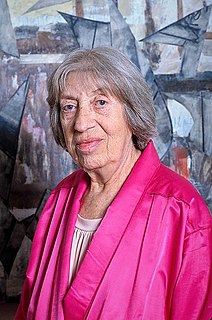Top 28 Quotes & Sayings by Lee Krasner
Explore popular quotes and sayings by an American artist Lee Krasner.
Last updated on November 25, 2024.
I went into my own black-out period which lasted two or three years where the canvases would simply build up until they'd get like stone and it was always just a gray mess. The image wouldn't emerge, but I worked pretty regularly. I was fighting to find I knew not what, but I could no longer stay with what I had.
























